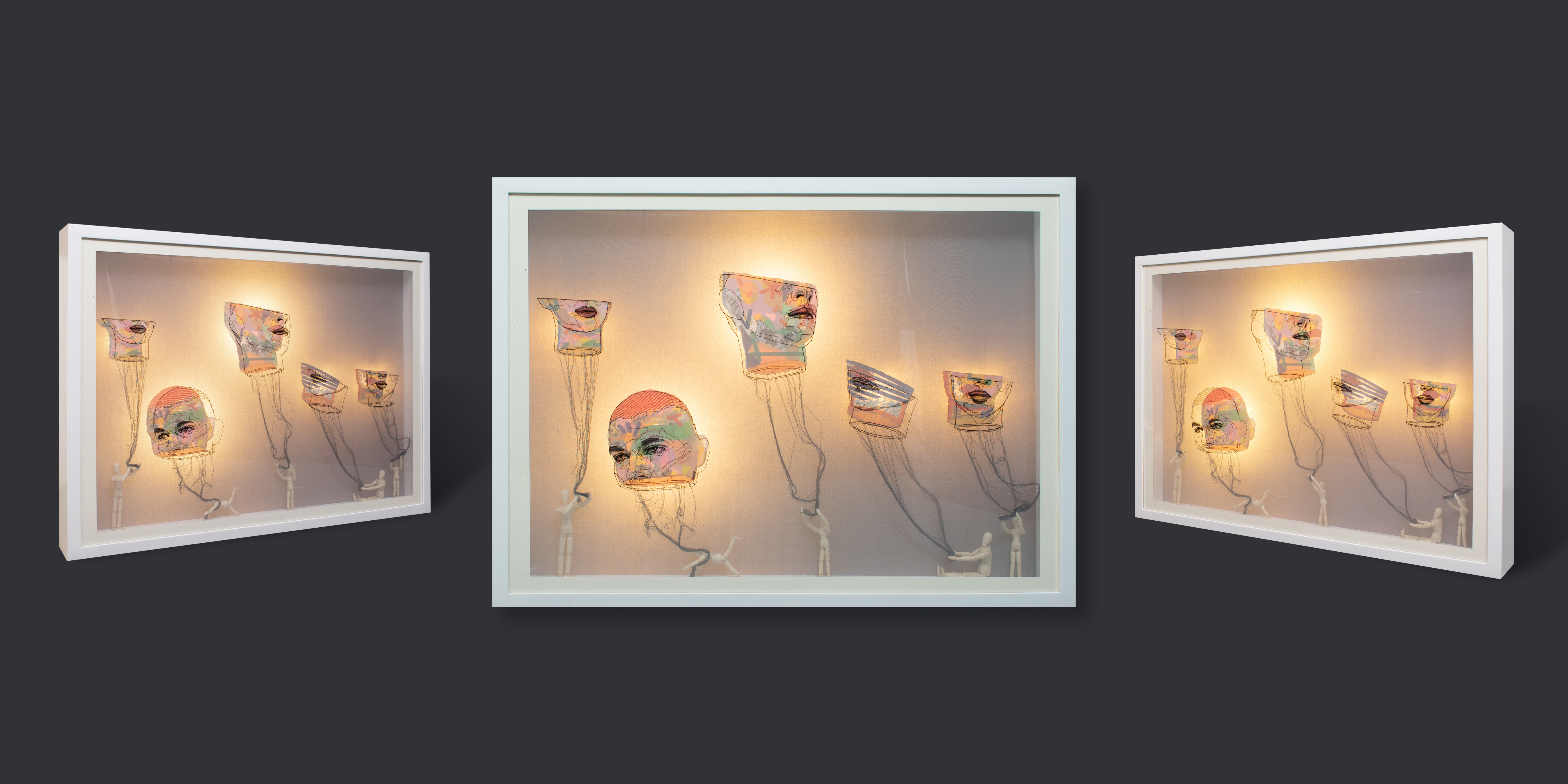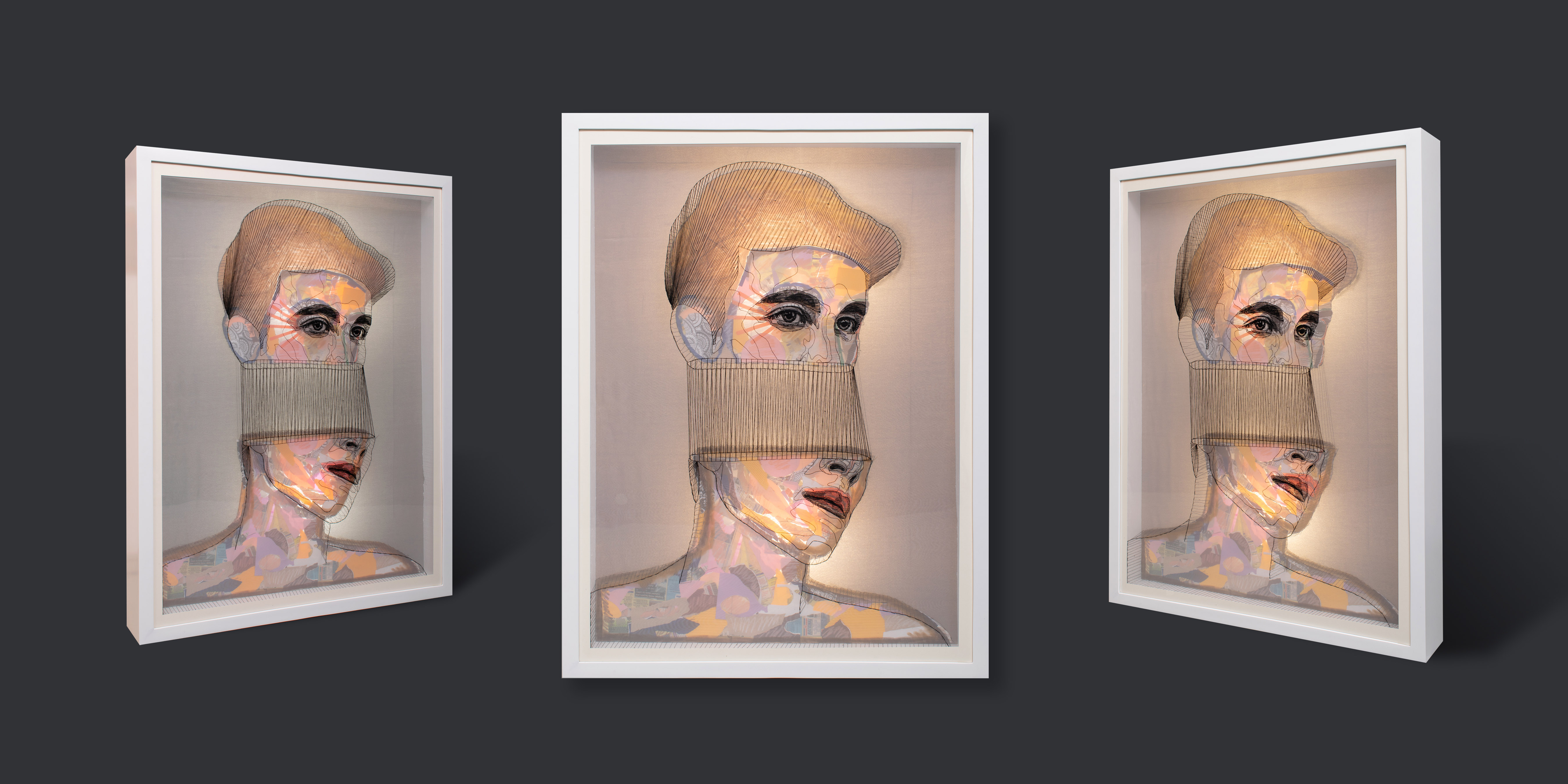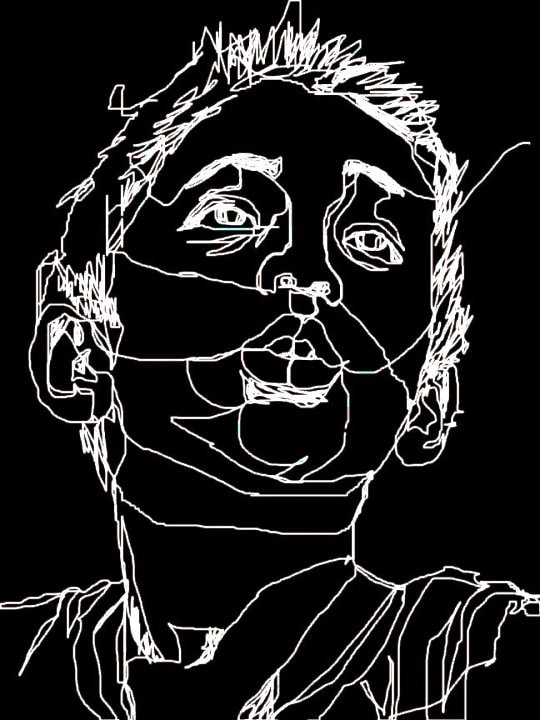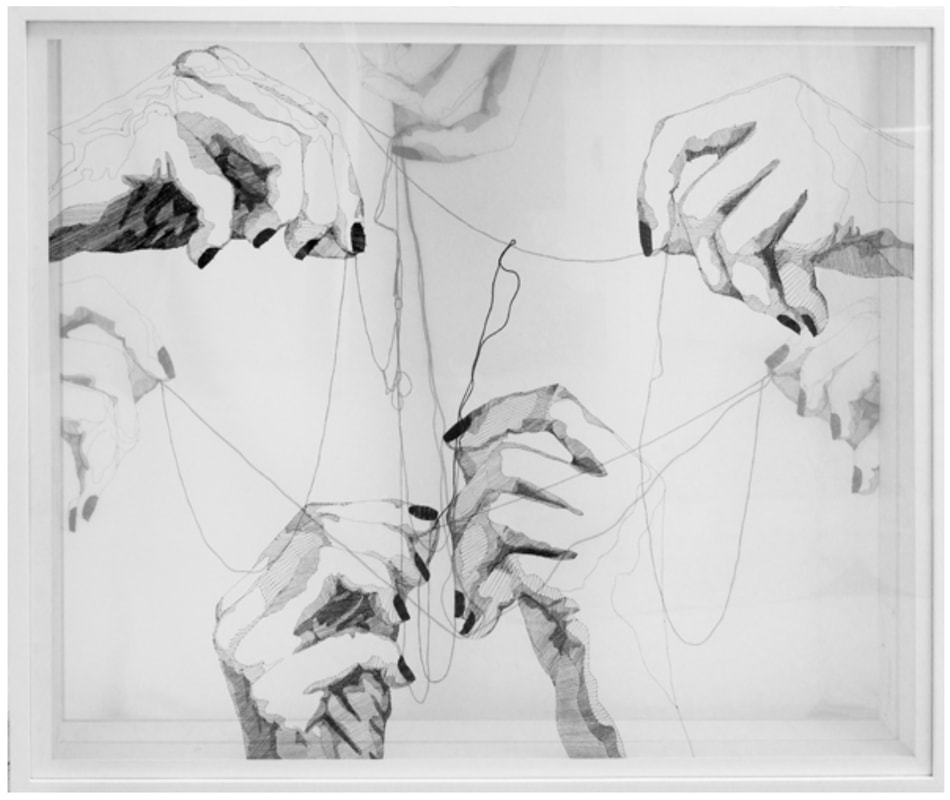In art, everything begins with a line. And from the line, form follows, colors ensue, and planes appear. But for artist Eugenia Alcaide, the line itself is more than capable of weaving an entire world of possibility—and this is a thread she has continued to follow in her years-long artistic practice.
When she made the decision to veer away from painting as her primary language for art-making, it was the line that revealed itself as a buoy in a sea of possibilities. Deceptive in its simplicity and clarity, the line is the “easiest to underestimate,” according to her. Her reckoning with the line first took shape in the year 2008, during her graduating thesis at the College of Fine Arts in the University of the Philippines Diliman. With a steady hand on a computer mouse, Alcaide created digital one-line portraits—portraits that were dynamic and full of dimension despite being drawn on the MS Paint application. It was a testament if anything to the artist’s eye and skill, especially considering the limitations that early iterations of digital softwares presented. But after two years, Alcaide’s signature approach to portraiture witnessed a significant evolution when she sought to find a way to translate her works into a physical, material form.
For her portraits, Alcaide seeks not to represent her subjects as they appear to the world. If the purpose of a portrait was to simply capture likeness, then a prosaic passport photo would be considered art. But as an artist, Alcaide understands that the power of portraiture lies in the story the artist is able to reveal and the artistic expression the work is able to behold. It is this emphasis on emotion towards her subjects that guides her hand, as she believes that “It is this emotion that compels, that makes art relatable, that turns a personal image universal”. And for this kind of project, there is only so much that the digital medium can elicit. To evoke such an expression would require a sense of visual quality, of texture—of materiality: the same kind of materiality that is able to trigger memories, give context, and build identities.
Experimentation ensued but eventually it was the silk screen that stuck, bearing a resemblance to the computer screen Alcaide had worked with previously. It too was made up of a minuscule grid. Onto this screen she introduced thread, first beginning with thicker cords which would over time become thinner, more refined. With this thread she continued her portraits. It was still her line, but it was taking on a new life, in the form of fibers instead of pixels. As the visual texture of the thread on fabric was familiar to most, it was through this medium that she was able to capture her subjects’ depths, their layers. But how much further can she go?

Evolution is the name of her game and Alcaide felt a natural impulse to unearth the possibilities of her threads and silks. What if the silk screen was unstretched, crumpled? What if she let loose threads hang? Then she began to layer—silk screens on top of one another, using lightboxes to emphasize their transparency. She played with these transparencies by using threads with varying thicknesses and colors, creating a game of choosing what to expose and what to obscure. It is this path of neverending experimentation and joyful discovery that gives Alcaide’s portraits a sense of freshness and vibrancy, while also sustaining her desire to portray her subject’s complexity.

While the skill of wielding a thread to create an image is already an admirable feat, it is the sense of wonder and surrealism that the artist renders in her works that completely capture the imagination.
And it all begins with a line.
“What interests me is the ironic duality of that single line. A line portrays simplicity, while inviting intrigue as the eye inevitably follows, and the line invariably leads,” says Alcaide. Similarly, to follow the thread of her artistic practice is definitely a testament to the wonders of complexity and depth that she has led it to.
Eugenia Alcaide will open her solo show, Layers, at Galerie Stephanie in Mandaluyong City, this February 9.
Corinne Fernandez Garcia is a feminist visual artist, writer, designer, & cultural worker from the Philippines. She graduated from Ateneo de Manila University with a BFA in Information Design and a Minor in Philosophy in 2018. Her works often articulate her observations on the intersections of memories, places, bodies, and patterns, and their relation to time. As an artist, her works were recently exhibited at Imahica Art Gallery, 98B Collaboratory, and the Ateneo Art Gallery through the Marciano Galang Acquisition Prize, of which she was a recipient in 2020. She has had her visual and written works published in HEIGHTS Ateneo & The Brown Orient Journal. She is currently the Education and Public Programs Assistant at the Metropolitan Museum of Manila.


